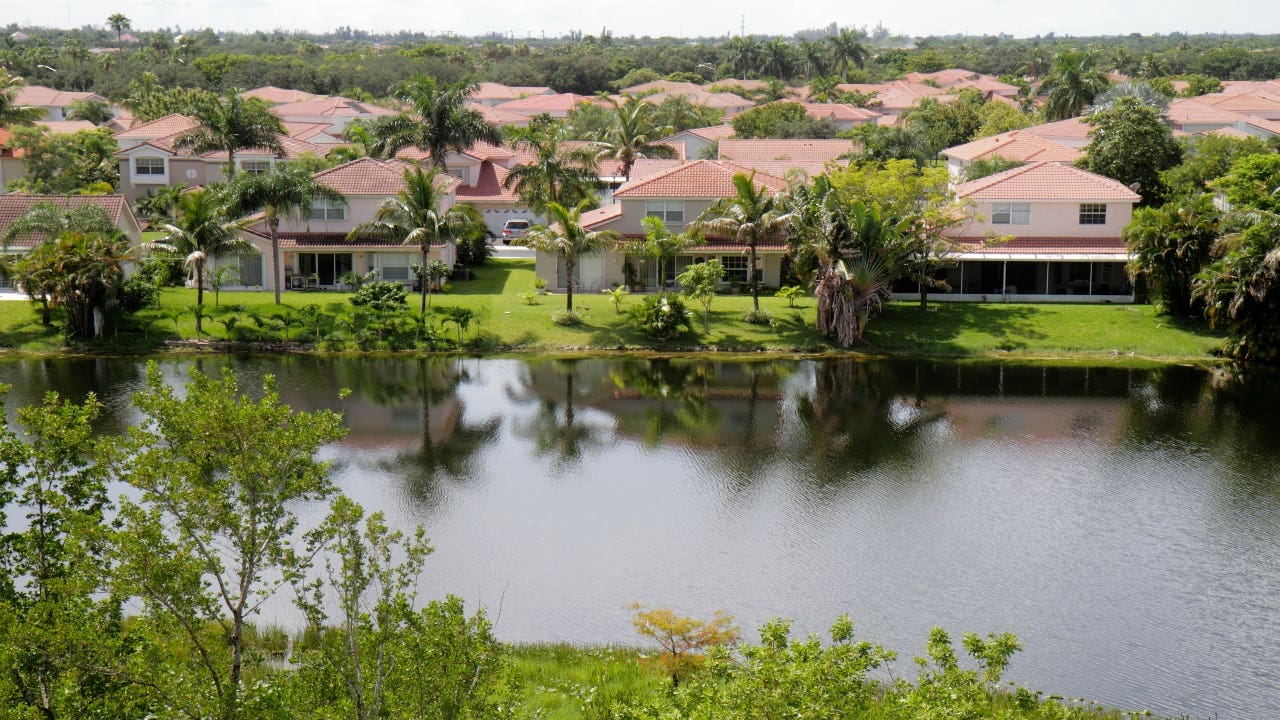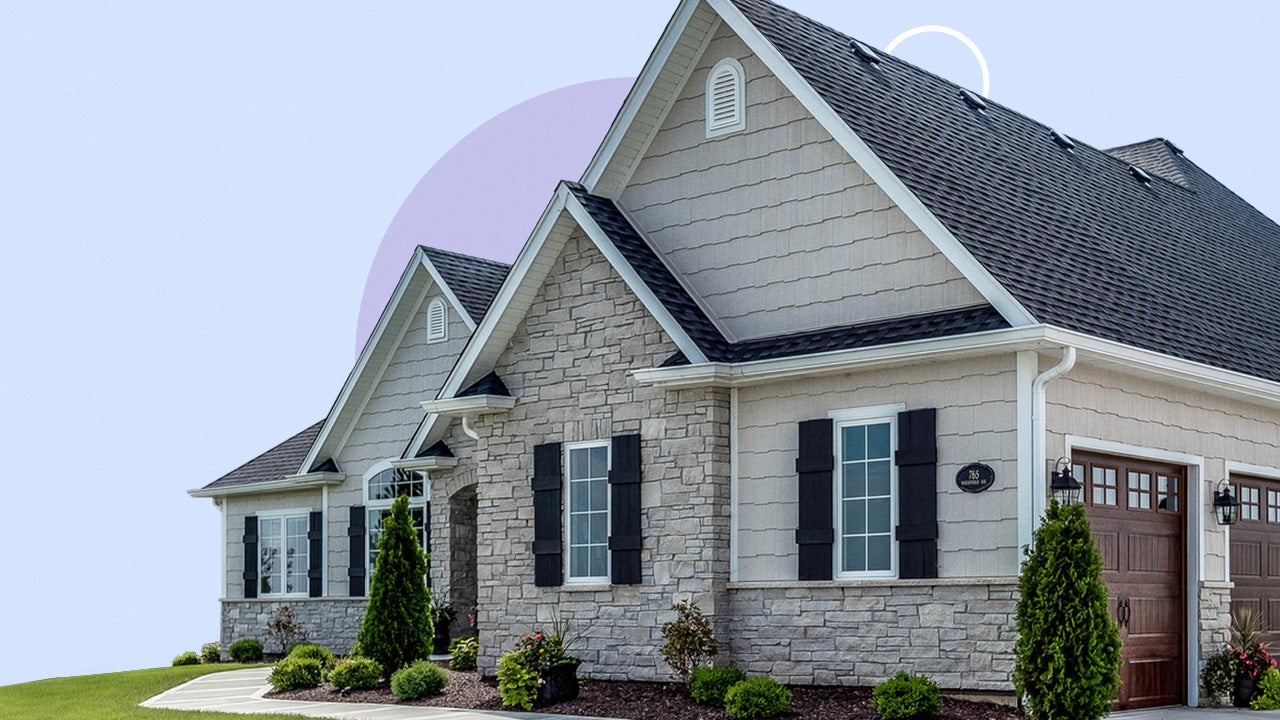Top 10 places where home-price gains have dramatically outpaced wages

From mid-2010 to mid-2020, the median price of homes sold nationally rose 30 percent. But during the same decade, incomes edged up just 11 percent, according to a Bankrate analysis of data from the National Association of Home Builders/Wells Fargo Housing Opportunity Index.
The gap is far more dramatic in some corners of the country, such as South Florida and Northern California. In Broward County, which includes Fort Lauderdale, the median home price soared 144 percent in a decade, while incomes remained flat. Miami saw a similar trend — prices shot up 144 percent, but incomes rose just 2 percent.
In Modesto, California, the typical home price also rose 144 percent in 10 years, far outpacing the 8 percent rise in incomes during that time. The trend — which raises new concerns about housing affordability — is intensifying during the coronavirus pandemic, which has further squeezed incomes while pushing home prices up.
Many wonder how long the disconnect can continue. “This is not a problem until it is — and then it will be a big one,” says Robert Brusca, chief economist at Facts and Opinions Economics in New York.
Chasm between home values, wages makes home search ‘frustrating’
Registered nurse Pat Diaz is about to become a first-time homeowner at age 59, but only after realizing just how dramatically home prices have risen in the Fort Lauderdale area, where she lives.
“I thought I made a decent buck,” Diaz says. “I got approved for $300,000, so I’m thinking, ‘OK, I should get me a nice house.’ Not so. It’s frustrating.”
After a home search she describes as an odyssey of losing out on bidding wars and touring properties in poor condition, Diaz landed a house in North Lauderdale. The nurse considers herself fortunate financially — she’s represented by the Service Employees International Union, which has negotiated annual raises in the range of 2 percent to 3 percent. For many workers, wages are flat or falling.
“I don’t understand how some of the lower-income workers afford to buy a house,” Diaz says.
Biggest gaps are in comparatively affordable areas
Typically, local incomes are a key driver of home prices. Other factors come into play, too, such as gluts or shortages of supply, along with movements in mortgage rates.
Intriguingly, nine of the 10 markets with the widest gaps between home values and incomes — see the full list below — are not super-expensive place to buy a home. The exception is San Jose, where prices have climbed to $1.1 million. Meanwhile, San Francisco, the nation’s priciest housing market, falls outside the top 10 — its 130 percent growth in home prices has been somewhat offset by a 30 percent rise in incomes over the past decade.
Rather, it’s the comparatively affordable markets that are seeing the biggest disconnects. Oakland, which has welcomed a flood of refugees from San Francisco’s rocketing prices, has one of the largest disconnects. So does Modesto, which has drawn Bay Area buyers who are willing to trade a long commute for more affordable homes.
Other markets with huge gaps — Bend, Oregon; Reno, Nevada; Riverside, California and Phoenix — are places that have drawn people from California’s priciest markets.
In South Florida, Fort Lauderdale and Miami — Nos. 1 and 2 on our list — have lured an influx of foreign buyers and new arrivals from New York, Boston and elsewhere.
“Those who can — the wealthy and wealthier retirees — will not stick around northern states in the cold winter and beyond while being shut in by the pandemic,” says Ned Murray, associate director of Florida International University’s Metropolitan Center. “This could have a significant impact on the housing supply, which is already getting tight.”
Those buyers aren’t constrained by local incomes. Port St. Lucie, Florida, is No. 6 on our list, in large part because its prices are more affordable than those in South Florida.
In part, the disconnect between wages and home prices is enabled by buyers willing to make long drives. Homeowners commuting between higher-wage communities and far-flung bedroom communities such as Modesto and Port St. Lucie can afford more than people making local wages.
But the widening gap has taken hold nearly everywhere in the U.S., which leaves some observers scratching their heads.
“Gaps between house price growth and wage growth are never sustainable in the long-run,” says Ralph McLaughlin, chief economist at Haus, a financial technology firm. “The question is how long it will persist in the short run. Our models suggest that the gap will shrink as home prices begin to cool or even decline at the beginning of next year.”
The 10 places with the biggest gaps
Here are 10 metro areas where home prices are rising far more quickly than incomes:
Fort Lauderdale, Florida
- Median home price, mid-2010: $117,000
- Median home price, mid-2020: $285,000
- Price change: 144 percent
- Median income, 2010: $66,200
- Median income, 2020: $66,300
- Income change: 0 percent
- Gap: 144 percent
Miami
- Median home price, mid-2010: $134,000
- Median home price, mid-2020: $325,000
- Price change: 143 percent
- Median income, 2010: $52,200
- Median income, 2020: $53,000
- Income change: 2 percent
- Gap: 142 percent
Modesto, California
- Median home price, mid-2010: $142,000
- Median home price, mid-2020: $346,000
- Price change: 144 percent
- Median income, 2010: $59,500
- Median income, 2020: $64,400
- Income change: 8 percent
- Gap: 136 percent
Bend, Oregon
- Median home price, mid-2010: $170,000
- Median home price, mid-2020: $399,000
- Price change: 135 percent
- Median income, 2010: $63,200
- Median income, 2020: $71,200
- Income change: 13 percent
- Gap: 122 percent
Oakland, California
- Median home price, mid-2010: $300,000
- Median home price, mid-2020: $735,000
- Price change: 145 percent
- Median income, 2010: $90,300
- Median income, 2020: $107,900
- Income change: 20 percent
- Gap: 120 percent
Port St. Lucie, Florida
- Median home price, mid-2010: $108,000
- Median home price, mid-2020: $240,000
- Price change: 122 percent
- Median income, 2010: $59,600
- Median income, 2020: $62,700
- Income change: 5 percent
- Gap: 117 percent
Reno, Nevada
- Median home price, mid-2010: $185,000
- Median home price, mid-2020: $400,000
- Price change: 116 percent
- Median income, 2010: $71,200
- Median income, 2020: $73,900
- Income change: 4 percent
- Gap: 112 percent
Boise, Idaho
- Median home price, mid-2010: $165,000
- Median home price, mid-2020: $364,000
- Price change: 121 percent
- Median income, 2010: $61,900
- Median income, 2020: $69,500
- Income change: 12 percent
- Gap: 109 percent
San Jose, California
- Median home price, mid-2010: $468,000
- Median home price, mid-2020: $1.1 million
- Price change: 136 percent
- Median income, 2010: $103,500
- Median income, 2020: $131,500
- Income change: 27 percent
- Gap: 109 percent
Phoenix
- Median home price, mid-2010: $142,000
- Median home price, mid-2020: $304,000
- Price change: 114 percent
- Median income, 2010: $66,600
- Median income, 2020: $72,300
- Income change: 9 percent
- Gap: 105 percent
Widening gap is crushing middle-income workers
These gaps are especially hard on service-sector workers, teachers and others who make modest incomes. After a big run-up in prices over the past decade, they struggle to afford homes.
One caveat: Many of these markets were hit especially hard by the mortgage meltdown that precipitated the Great Recession. Prices in Fort Lauderdale and Phoenix fell hard during the crash, as foreclosures flooded housing markets.
Predictably, home prices rebounded, rising strongly after 2010 as the economy recovered. Not so predictably, home prices kept rising.
Despite soaring prices in South Florida, home values still remain below their frothy heights of 2006 and 2007. “We’re nowhere near the peaks of housing unaffordability we achieved more than a decade ago,” says Ken Johnson, a housing economist at Florida Atlantic University.
Gay Cororatan, director of housing and commercial research at the National Association of Realtors, notes that rock-bottom mortgage rates have taken some of the sting out of rising home prices. After all, budget-conscious consumers focus more on the monthly payment than the overall price.
However, low mortgage rates also push up home prices. As buyers can afford more house, they are willing to bid up prices, especially when there’s a severe shortage of inventory nationwide. Inventory is down about a third nationally and more than 50 percent in California, according to Realtor.com.
But with the coronavirus recession pushing home values ever higher, the disconnect between prices and wages has intensified. And with unemployment in double digits, the trend shows little sign of easing.
“Until you get slack out of that market,” Cororatan says, “you’re not going to see wages rising much.”
Methodology
To calculate changes in home prices and incomes, Bankrate relied on the National Association of Home Builders/Wells Fargo Housing Opportunity Index. That database reports median home prices based on quarterly sales of new and existing houses and condos. The index relies on U.S. Department of Housing and Urban Development’s estimates of annual family income by metro area.
Learn more:
You may also like

Median home prices in every state




